-
EXECUTIVE SUMMARY
-
MARKET INTRODUCTION
-
Definition
-
Scope of the Study
- Research Objective
- Limitations
-
Assumptions
-
RESEARCH METHODOLOGY
-
Overview
-
Data Mining
-
Secondary Research
-
Primary Research
- Breakdown of Primary
-
Primary Interviews and Information Gathering Process
-
Respondents
-
Forecasting Model
-
Market Size Estimation
- Top-Down Approach
-
Bottom-Up Approach
-
Data Triangulation
-
Validation
-
MARKET DYNAMICS
-
Overview
-
Drivers
-
Restraints
-
Opportunities
-
MARKET FACTOR ANALYSIS
-
Value Chain Analysis
-
Porter’s Five Forces Analysis
- Bargaining
- Bargaining Power of Buyers
- Threat of
- Threat of Substitutes
- Intensity of Rivalry
-
Power of Suppliers
-
New Entrants
-
COVID-19 Impact Analysis
- Market Impact Analysis
- Regional
- Opportunity and Threat Analysis
-
Impact
-
GLOBAL GAS CONCENTRATION
-
SENSOR MARKET,BY PRODUCT
-
Overview
-
Oxygen (O2)/Lambda Sensors
-
Carbon Dioxide (CO2) Sensors
-
Carbon Monoxide (CO) Sensors
-
Nitrogen Oxide (NOx) Sensors
-
Methyl Mercaptan Sensor
-
Others
-
(Hydrogen, Ammonia, Hydrogen Sulfide)
-
GLOBAL GAS CONCENTRATION SENSOR MARKET,BY
-
TYPE
-
Overview
-
Wireless
-
Wired
-
GLOBAL GAS CONCENTRATION
-
SENSOR MARKET,BY TECHNOLOGY
-
Overview
-
Electrochemical
-
Semiconductor
-
Solid State/MOS
-
Photo-ionization Detector (PID)
-
Catalytic
-
Infrared (IR)
-
Others
-
GLOBAL GAS CONCENTRATION
-
SENSOR MARKET, BY END-USE
-
Overview
-
Medical
-
Building
-
Automation & Domestic Appliances
-
Environmental
-
Petrochemical
-
Automotive
-
Industrial
-
Agriculture
-
Others
-
GLOBAL GAS CONCENTRATION SENSOR MARKET, BY REGION
-
Overview
- US
- Canada
-
North America
-
Europe
- France
- UK
- Italy
- Spain
- Rest of Europe
-
Germany
-
Asia-Pacific
- China
- Japan
- South Korea
- Australia
-
India
-
Rest of Asia-Pacific
-
Rest of the World
- Middle East
- Latin America
-
Africa
-
COMPETITIVE LANDSCAPE
-
Overview
-
Competitive Analysis
-
Market Share Analysis
-
Major Growth
-
Strategy in the Global Gas Concentration Sensor Market,
-
Competitive Benchmarking
-
Leading Players in Terms of Number of Developments in the Global Gas Concentration
-
Sensor Market,
-
Key developments and Growth Strategies
- New
- Merger &Acquisitions
-
ProductLaunch/Service Deployment
-
Joint Ventures
-
Major Players Financial Matrix
- Sales &
- Major Players R&D Expenditure.2025
-
Operating Income,2025
-
COMPANY PROFILES
-
ABB Ltd.;
- Company Overview
- Products Offered
- Key Developments
- SWOT Analysis
- Key Strategies
-
Financial Overview
-
AlphaSense Inc.;
- Company Overview
- Financial Overview
- Products
- Key Developments
- SWOT Analysis
- Key
-
Offered
-
Strategies
-
City Technology Ltd.,
- Company Overview
- Products Offered
- Key Developments
- SWOT Analysis
- Key Strategies
-
Financial Overview
-
Dynament;
- Financial Overview
- Products Offered
- Key Developments
- SWOT Analysis
- Key Strategies
-
Company Overview
-
Figaro Engineering Inc.;
- Company Overview
- Financial
- Products Offered
- Key Developments
- Key Strategies
-
Overview
-
SWOT Analysis
-
Membrapor;
- Company
- Financial Overview
- Products Offered
- SWOT Analysis
- Key Strategies
- Company Overview
- Financial Overview
- Products Offered
- Key Developments
- SWOT Analysis
- Key Strategies
-
Overview
-
Key Developments
-
Nemoto & Co. Ltd.;.
-
Robert Bosch LLC;.
- Company Overview
- Financial Overview
- Products Offered
- Key Developments
- SWOT Analysis
- Key Strategies
-
Siemens;.
- Financial Overview
- Products Offered
- Key Developments
- SWOT Analysis
- Key Strategies
-
Company Overview
-
GfG Gas Detection UK Ltd.;
- Company Overview
- Products Offered
- Key Developments
- SWOT Analysis
- Key Strategies
-
Financial Overview
-
FLIR Systems,
- Company Overview
- Financial Overview
- Key Developments
- SWOT Analysis
-
Inc..
-
Products Offered
-
Key Strategies
-
APPENDIX
-
APPENDIX
-
References
-
Related Reports
-
-
LIST OF TABLES
-
GLOBAL GAS
-
CONCENTRATION SENSOR MARKET, SYNOPSIS, 2018-2034
-
GLOBAL GAS CONCENTRATION
-
SENSOR MARKET, ESTIMATES &FORECAST, 2025-2034 (USD BILLION)
-
GLOBAL
-
GAS CONCENTRATION SENSOR MARKET,BY PRODUCT, 2025-2034 (USD BILLION)
-
TABLE 4
-
GLOBAL GAS CONCENTRATION SENSOR MARKET,BY TYPE, 2025-2034 (USD BILLION)
-
TABLE
-
GLOBAL GAS CONCENTRATION SENSOR MARKET,BY TECHNOLOGY, 2025-2034 (USD BILLION)
-
GLOBAL GAS CONCENTRATION SENSOR MARKET, BYEND-USE, 2025-2034 (USD BILLION)
-
NORTH AMERICA: GAS CONCENTRATION SENSOR MARKET,BY PRODUCT, 2025-2034 (USD
-
BILLION)
-
NORTH AMERICA: GAS CONCENTRATION SENSOR MARKET,BY TYPE, 2025-2034
-
(USD BILLION)
-
NORTH AMERICA: GAS CONCENTRATION SENSOR MARKET,BY TECHNOLOGY,
-
NORTH AMERICA: GAS CONCENTRATION SENSOR MARKET,BY
-
END-USE,2025-2034 (USD BILLION)
-
US: GAS CONCENTRATION SENSOR MARKET,BY
-
PRODUCT, 2025-2034 (USD BILLION)
-
US: GAS CONCENTRATION SENSOR MARKET,BY
-
TYPE, 2025-2034 (USD BILLION)
-
US: GAS CONCENTRATION SENSOR MARKET,BY
-
TECHNOLOGY, 2025-2034 (USD BILLION)
-
US: GAS CONCENTRATION SENSOR MARKET,BY
-
END-USE,2025-2034 (USD BILLION)
-
CANADA: GAS CONCENTRATION SENSOR MARKET,BY
-
PRODUCT, 2025-2034 (USD BILLION)
-
CANADA: GAS CONCENTRATION SENSOR
-
MARKET,BY TYPE, 2025-2034 (USD BILLION)
-
CANADA: GAS CONCENTRATION
-
SENSOR MARKET,BY TECHNOLOGY, 2025-2034 (USD BILLION)
-
CANADA: GAS CONCENTRATION
-
SENSOR MARKET,BY END-USE,2025-2034 (USD BILLION)
-
EUROPE: GAS CONCENTRATION
-
SENSOR MARKET,BY PRODUCT, 2025-2034 (USD BILLION)
-
EUROPE: GAS CONCENTRATION
-
SENSOR MARKET, BY TYPE, 2025-2034 (USD BILLION)
-
EUROPE: GAS CONCENTRATION
-
SENSOR MARKET, BY TECHNOLOGY, 2025-2034 (USD BILLION)
-
EUROPE: GAS CONCENTRATION
-
SENSOR MARKET,BY END-USE,2025-2034 (USD BILLION)
-
GERMANY: GAS CONCENTRATION
-
SENSOR MARKET,BY PRODUCT,2025-2034 (USD BILLION)
-
GERMANY: GAS CONCENTRATION
-
SENSOR MARKET, BY TYPE, 2025-2034 (USD BILLION)
-
GERMANY: GAS CONCENTRATION
-
SENSOR MARKET, BY TECHNOLOGY, 2025-2034 (USD BILLION)
-
GERMANY: GAS
-
CONCENTRATION SENSOR MARKET,BY END-USE,2025-2034 (USD BILLION)
-
FRANCE:
-
GAS CONCENTRATION SENSOR MARKET,BY PRODUCT, 2025-2034 (USD BILLION)
-
TABLE 10
-
FRANCE: GAS CONCENTRATION SENSOR MARKET, BY TYPE, 2025-2034 (USD BILLION)
-
TABLE
-
FRANCE: GAS CONCENTRATION SENSOR MARKET, BY TECHNOLOGY, 2025-2034 (USD BILLION)
-
FRANCE: GAS CONCENTRATION SENSOR MARKET,BY END-USE,2025-2034 (USD BILLION)
-
ITALY: GAS CONCENTRATION SENSOR MARKET,BY PRODUCT, 2025-2034 (USD BILLION)
-
ITALY: GAS CONCENTRATION SENSOR MARKET, BY TYPE, 2025-2034 (USD BILLION)
-
ITALY: GAS CONCENTRATION SENSOR MARKET, BY TECHNOLOGY, 2025-2034 (USD
-
BILLION)
-
ITALY: GAS CONCENTRATION SENSOR MARKET,BY END-USE,2025-2034
-
(USD BILLION)
-
SPAIN: GAS CONCENTRATION SENSOR MARKET,BY PRODUCT, 2025-2034
-
(USD BILLION)
-
SPAIN: GAS CONCENTRATION SENSOR MARKET, BY TYPE, 2025-2034
-
(USD BILLION)
-
SPAIN: GAS CONCENTRATION SENSOR MARKET, BY TECHNOLOGY,
-
SPAIN: GAS CONCENTRATION SENSOR MARKET,BY
-
END-USE,2025-2034 (USD BILLION)
-
UK: GAS CONCENTRATION SENSOR MARKET,BY
-
PRODUCT, 2025-2034 (USD BILLION)
-
UK: GAS CONCENTRATION SENSOR MARKET,
-
BY TYPE, 2025-2034 (USD BILLION)
-
UK: GAS CONCENTRATION SENSOR MARKET,
-
BY TECHNOLOGY, 2025-2034 (USD BILLION)
-
UK: GAS CONCENTRATION SENSOR
-
MARKET,BY END-USE, 2025-2034 (USD BILLION)
-
REST OF EUROPE: GAS CONCENTRATION
-
SENSOR MARKET,BY PRODUCT, 2025-2034 (USD BILLION)
-
REST OF EUROPE:
-
GAS CONCENTRATION SENSOR MARKET, BY TYPE, 2025-2034 (USD BILLION)
-
TABLE 27
-
REST OF EUROPE: GAS CONCENTRATION SENSOR MARKET, BY TECHNOLOGY, 2025-2034 (USD BILLION)
-
REST OF EUROPE: GAS CONCENTRATION SENSOR MARKET,BY END-USE,2025-2034
-
(USD BILLION)
-
ASIA-PACIFIC: GAS CONCENTRATION SENSOR MARKET,BY PRODUCT,
-
ASIA-PACIFIC: GAS CONCENTRATION SENSOR MARKET,
-
BY TYPE, 2025-2034 (USD BILLION)
-
ASIA-PACIFIC: GAS CONCENTRATION SENSOR
-
MARKET, BY TECHNOLOGY, 2025-2034 (USD BILLION)
-
ASIA-PACIFIC: GAS CONCENTRATION
-
SENSOR MARKET,BY END-USE,2025-2034 (USD BILLION)
-
JAPAN: GAS CONCENTRATION
-
SENSOR MARKET,BY PRODUCT, 2025-2034 (USD BILLION)
-
JAPAN: GAS CONCENTRATION
-
SENSOR MARKET, BY TYPE, 2025-2034 (USD BILLION)
-
JAPAN: GAS CONCENTRATION
-
SENSOR MARKET, BY TECHNOLOGY, 2025-2034 (USD BILLION)
-
JAPAN: GAS CONCENTRATION
-
SENSOR MARKET,BY END-USE,2025-2034 (USD BILLION)
-
CHINA: GAS CONCENTRATION
-
SENSOR MARKET,BY PRODUCT, 2025-2034 (USD BILLION)
-
CHINA: GAS CONCENTRATION
-
SENSOR MARKET, BY TYPE, 2025-2034 (USD BILLION)
-
CHINA: GAS CONCENTRATION
-
SENSOR MARKET, BY TECHNOLOGY, 2025-2034 (USD BILLION)
-
CHINA: GAS CONCENTRATION
-
SENSOR MARKET,BY END-USE,2025-2034 (USD BILLION)
-
INDIA: GAS CONCENTRATION
-
SENSOR MARKET,BY PRODUCT, 2025-2034 (USD BILLION)
-
INDIA: GAS CONCENTRATION
-
SENSOR MARKET, BY TYPE, 2025-2034 (USD BILLION)
-
INDIA: GAS CONCENTRATION
-
SENSOR MARKET, BY TECHNOLOGY, 2025-2034 (USD BILLION)
-
INDIA: GAS CONCENTRATION
-
SENSOR MARKET,BY END-USE,2025-2034 (USD BILLION)
-
AUSTRALIA: GAS CONCENTRATION
-
SENSOR MARKET,BY PRODUCT, 2025-2034 (USD BILLION)
-
AUSTRALIA: GAS CONCENTRATION
-
SENSOR MARKET, BY TYPE, 2025-2034 (USD BILLION)
-
AUSTRALIA: GAS CONCENTRATION
-
SENSOR MARKET, BY TECHNOLOGY, 2025-2034 (USD BILLION)
-
AUSTRALIA: GAS
-
CONCENTRATION SENSOR MARKET,BY END-USE,2025-2034 (USD BILLION)
-
SOUTH
-
KOREA: GAS CONCENTRATION SENSOR MARKET,BY PRODUCT, 2025-2034 (USD BILLION)
-
TABLE
-
SOUTH KOREA: GAS CONCENTRATION SENSOR MARKET, BY TYPE, 2025-2034 (USD BILLION)
-
SOUTH KOREA: GAS CONCENTRATION SENSOR MARKET, BY TECHNOLOGY, 2025-2034
-
(USD BILLION)
-
SOUTH KOREA: GAS CONCENTRATION SENSOR MARKET,BY END-USE,2025-2034
-
(USD BILLION)
-
REST OF ASIA-PACIFIC: GAS CONCENTRATION SENSOR MARKET,BY
-
PRODUCT, 2025-2034 (USD BILLION)
-
REST OF ASIA-PACIFIC: GAS CONCENTRATION
-
SENSOR MARKET, BY TYPE, 2025-2034 (USD BILLION)
-
REST OF ASIA-PACIFIC:
-
GAS CONCENTRATION SENSOR MARKET, BY TECHNOLOGY, 2025-2034 (USD BILLION)
-
TABLE
-
REST OF ASIA-PACIFIC: GAS CONCENTRATION SENSOR MARKET,BY END-USE,2025-2034 (USD
-
BILLION)
-
REST OF THE WORLD: GAS CONCENTRATION SENSOR MARKET,BY PRODUCT,
-
REST OF THE WORLD: GAS CONCENTRATION SENSOR
-
MARKET, BY TYPE, 2025-2034 (USD BILLION)
-
REST OF THE WORLD: GAS CONCENTRATION
-
SENSOR MARKET, BY TECHNOLOGY, 2025-2034 (USD BILLION)
-
REST OF THE
-
WORLD: GAS CONCENTRATION SENSOR MARKET,BY END-USE,2025-2034 (USD BILLION)
-
TABLE
-
MIDDLE EAST: GAS CONCENTRATION SENSOR MARKET,BY PRODUCT, 2025-2034 (USD BILLION)
-
MIDDLE EAST: GAS CONCENTRATION SENSOR MARKET, BY TYPE, 2025-2034 (USD
-
BILLION)
-
MIDDLE EAST: GAS CONCENTRATION SENSOR MARKET, BY TECHNOLOGY,
-
MIDDLE EAST: GAS CONCENTRATION SENSOR MARKET,BY
-
END-USE,2025-2034 (USD BILLION)
-
AFRICA: GAS CONCENTRATION SENSOR MARKET,BY
-
PRODUCT, 2025-2034 (USD BILLION)
-
AFRICA: GAS CONCENTRATION SENSOR
-
MARKET, BY TYPE, 2025-2034 (USD BILLION)
-
AFRICA: GAS CONCENTRATION
-
SENSOR MARKET, BY TECHNOLOGY, 2025-2034 (USD BILLION)
-
AFRICA: GAS
-
CONCENTRATION SENSOR MARKET,BY END-USE,2025-2034 (USD BILLION)
-
LATIN
-
AMERICA: GAS CONCENTRATION SENSOR MARKET,BY PRODUCT, 2025-2034 (USD BILLION)
-
LATIN AMERICA: GAS CONCENTRATION SENSOR MARKET, BY TYPE, 2025-2034 (USD
-
BILLION)
-
LATIN AMERICA: GAS CONCENTRATION SENSOR MARKET, BY TECHNOLOGY,
-
LATIN AMERICA: GAS CONCENTRATION SENSOR MARKET,BY
-
END-USE, 2025-2034 (USD BILLION)
-
LIST OF FIGURES
-
RESEARCH PROCESS
-
MARKET STRUCTURE FOR THE GLOBAL GAS CONCENTRATION SENSOR MARKET
-
FIGURE
-
MARKET DYNAMICS FOR THE GLOBAL GAS CONCENTRATION SENSOR MARKET
-
GLOBAL
-
GAS CONCENTRATION SENSOR MARKET, SHARE (%), BY PRODUCT, 2025
-
GLOBAL
-
GAS CONCENTRATION SENSOR MARKET, SHARE (%), BY TYPE, 2025
-
GLOBAL GAS
-
CONCENTRATION SENSOR MARKET, SHARE (%), BY TECHNOLOGY, 2025
-
GLOBAL
-
GAS CONCENTRATION SENSOR MARKET, SHARE (%), BY END-USE,2025
-
GLOBAL
-
GAS CONCENTRATION SENSOR MARKET, SHARE (%), BY REGION, 2025
-
NORTH
-
AMERICA: GAS CONCENTRATION SENSOR MARKET, SHARE (%), BY REGION, 2025
-
FIGURE
-
EUROPE: GAS CONCENTRATION SENSOR MARKET, SHARE (%), BY REGION, 2025
-
FIGURE
-
ASIA-PACIFIC: GAS CONCENTRATION SENSOR MARKET, SHARE (%), BY REGION, 2025
-
REST OF THE WORLD: GAS CONCENTRATION SENSOR MARKET, SHARE (%), BY REGION,
-
GLOBAL GAS CONCENTRATION SENSOR MARKET: COMPANY SHARE ANALYSIS,
-
ABB LTD.;: FINANCIAL OVERVIEW SNAPSHOT
-
ABB
-
LTD.;: SWOT ANALYSIS
-
ALPHASENSE INC.;:FINANCIAL OVERVIEW SNAPSHOT
-
ALPHASENSE INC.;:SWOT ANALYSIS
-
CITY TECHNOLOGY LTD.,:FINANCIAL
-
OVERVIEW SNAPSHOT
-
CITY TECHNOLOGY LTD.,:SWOT ANALYSIS
-
FIGURE
-
DYNAMENT;: FINANCIAL OVERVIEW SNAPSHOT
-
DYNAMENT;:SWOT ANALYSIS
-
FIGARO ENGINEERING INC.; FINANCIAL OVERVIEW SNAPSHOT
-
FIGURE 23
-
FIGARO ENGINEERING INC.; SWOT ANALYSIS
-
MEMBRAPOR.:FINANCIAL OVERVIEW
-
SNAPSHOT
-
MEMBRAPOR.:SWOT ANALYSIS
-
NEMOTO & CO.
-
LTD.: FINANCIAL OVERVIEW SNAPSHOT
-
NEMOTO & CO. LTD.: SWOT ANALYSIS
-
ROBERT BOSCH LLC.: FINANCIAL OVERVIEW SNAPSHOT
-
ROBERT
-
BOSCH LLC.: SWOT ANALYSIS
-
SIEMENS;: FINANCIAL OVERVIEW SNAPSHOT
-
SIEMENS;: SWOT ANALYSIS
-
GFG GAS DETECTION UK LTD.;.:FINANCIAL
-
OVERVIEW SNAPSHOT
-
GFG GAS DETECTION UK LTD.;.:SWOT ANALYSIS
-
FIGURE
-
FLIR SYSTEMS, INC.: FINANCIAL OVERVIEW SNAPSHOT
-
FLIR SYSTEMS,
-
INC.: SWOT ANALYSIS
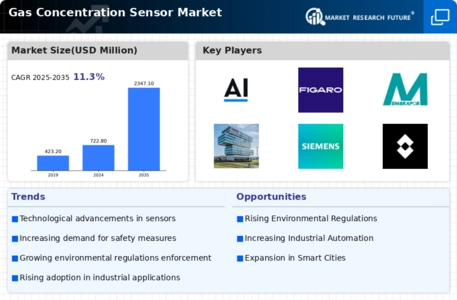
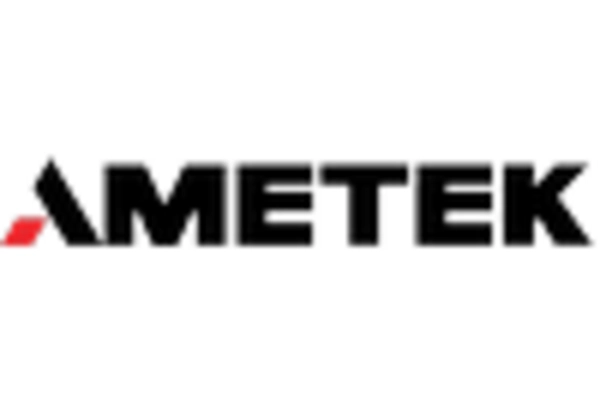
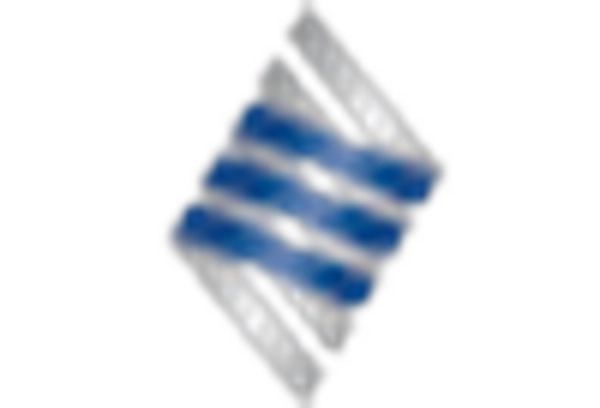
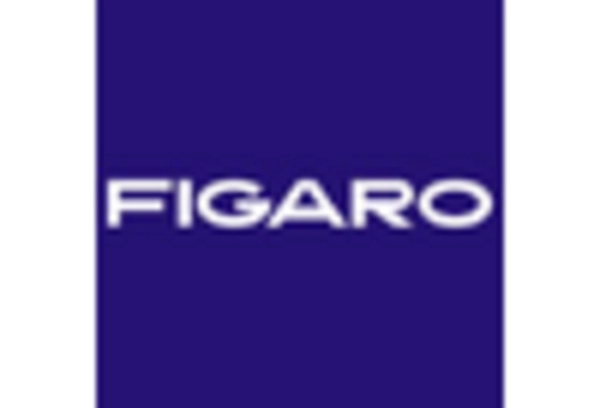

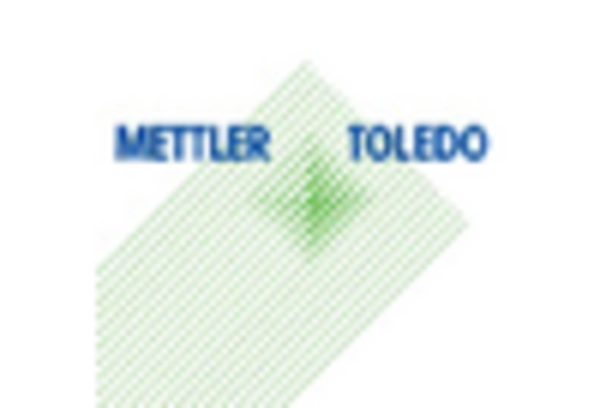










Leave a Comment